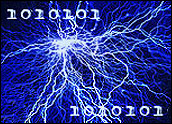
Researchers at Northwestern University say they’ve made significant progress in research that could lead to longer life for the rechargeable batteries found in electronic gadgets.
A team of engineers working on a lithium-ion battery said that by taking a chemical engineering approach, they’ve made a power cell that not only lasts longer, but can also charge 10 times faster than normal batteries.
The scientists looked at the way current batteries charge — a chemical reaction in which lithium ions bolt between the anode and cathode ends of the battery — and noted that battery life depends on how many of those ions could fit into the anode or cathode. They also recognized the speed at which those ions traveled was limiting how fast a battery could be charged.
Previous research has tried using silicon instead of carbon sheets because of silicon’s ability to hold more ions, but its quick expansion and contraction caused breakage and fragmentation.
So the team at Northwestern worked to combine the strengths of carbon and silicon to cancel out the weaknesses. The engineers filled graphene sheets with silicon nanoclusters to increase the amount of ions that can be stored in the battery. At the same time, because of its relatively small volume, the battery gained the ability to charge faster.
Battery Life Catching Up to Other Mobile Improvements
Whereas technological factors like processor speed and storage have evolved relatively quickly, breakthroughs in the power cell field are comparatively fewer and further between, making available battery power one of the strongest limiting factors in the development of personal tech like cellphones.
“Based on work we have done in the past, I can say that power requirements for handsets increase on the order of 15 percent to 20 percent per year, while the battery performance only increases by about 5 percent,” Bill Morelli, director of mobile technologies & convergence at IMS Research, told TechNewsWorld.
That’s largely due to the often tedious engineering approach needed to research battery improvement, according to Harold Kung, professor of chemical and biological engineering at Northwestern University and lead author of the paper on battery life, which was recently published in the journal Advanced Energy Materials.
“We can try to tackle the battery life problem by understanding the chemistry of the failure mechanism, or by inventing a new chemical approach. These are often slow processes,” Kung told TechNewsWorld.
A good battery takes a long time to fail, making the data collecting process quite slow.
Once realized, though, a more powerful battery could change the way consumers use mobile devices.
“A more powerful battery, i.e. more energy and better performance characteristics, would enable more sophisticated features to become standard, or introduction of newer features, such as watching movies and TV programs before recharging, adding build-in flashes for camera and lighting for video recording, a more powerful speaker, better reception,” said Kung.
With so much power in a device originally designed simply to make phone calls, the rest of the gadget industry could see a restructuring as consumers acquire handsets with more functions.
“The devices that will be the most threatened by an improved phone battery will be the smaller devices, not the bigger ones. If consumers don’t need to worry about the battery dying, they will be more likely to use their handsets as digital cameras, a portable media player, or a portable game console, which will have a big impact on sales of those standalone devices, many of which are already in decline due to smartphones,” said Morelli.
Not in Time for Black Friday
Although the advantages to a more juiced-up battery are clear, researchers say this technology won’t be hitting consumer devices for a while.
“I expect that this improvement will be in a commercial battery within three to five years. If we can improve the cathode as well, then there will be a quantum improvement in battery performance. If the cost is not prohibitive, I expect the battery companies to compete to bring these advances into commercial products,” said Kung.
In the meantime, other research is being done to improve energy in mobile devices on all fronts. Much research has been done to use nanofiber materials in manufacturing a battery, for instance.
Outside of a chemical engineering approach, many companies are working to make sure that if the battery can’t be improved, consumers at least have more places to charge their devices. They’re working on getting outlets into common public work spaces such as airports, restaurant tables and desktops.
“Despite the lag in battery capacity, manufacturers are still working very, very hard on improving the performance of the handset, mostly through more efficient use of the components and smart energy management. This includes things like powering down the radios, display and processors when not in use,” said Morelli.
Since battery power is one of the main limitations in the mobile device design, companies won’t stop churning out ideas until a super-energized battery is part of every cellphone.
“Power and battery life are one of the single biggest challenges facing the mobile handset industry, and it is not a problem that will go away any time soon. For a company that can make a significant breakthrough in this space, the payoff would be huge,” said Morelli.





















































